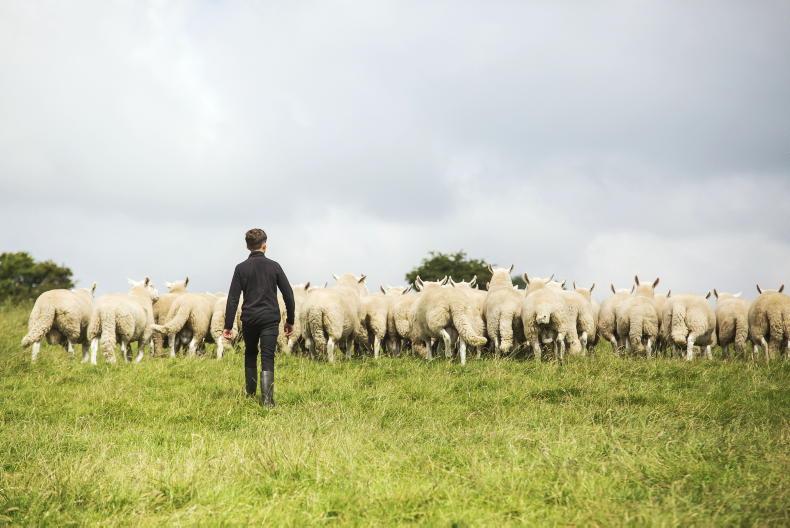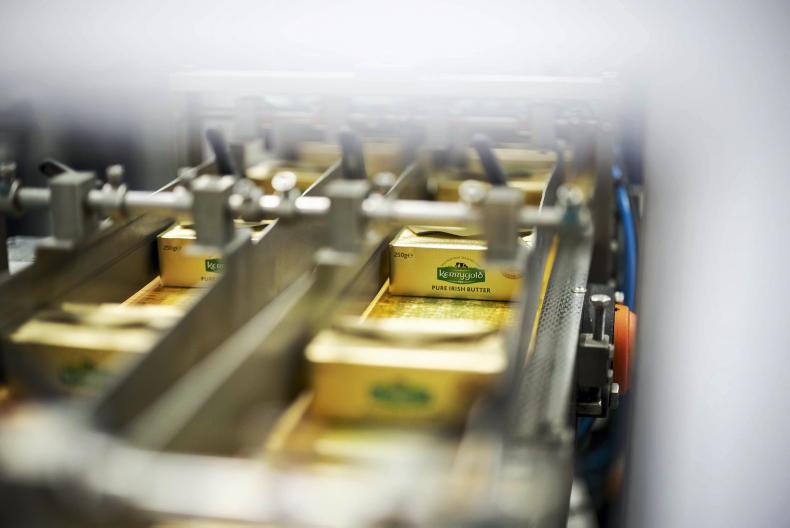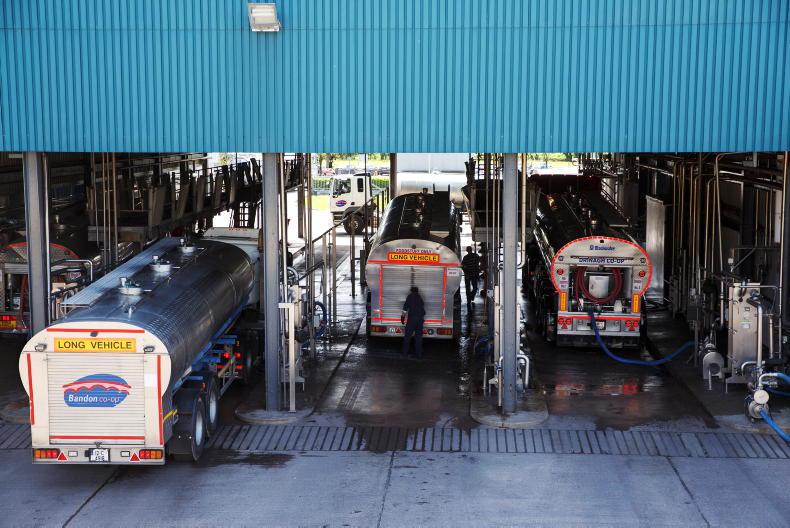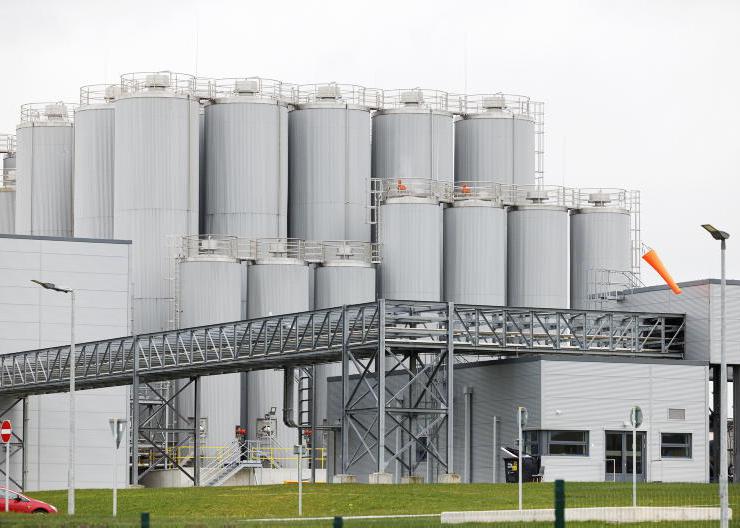For the first year in a long number of years, Irish beef farmers can look to 2025 with a positive outlook.
Yes, there are huge challenges which are industry faces like the Mercosur trade deal, low incomes, nitrates issues, reduced supports and succession, but with better prices and a better outlook it’s almost as if our industry is in a better place to take them on in 2025.

Live exports look set to continue on the high note they left off on in 2024.
Live exports look set to continue on the high note they left off on in 2024 with continued high demand coming from countries like Morocco in North Africa for Irish store cattle and weanlings.
High numbers of live exports will also have a positive effect on beefs price in 2025 with Bord Bia estimating that there will be 71,000 head of cattle less available for slaughter in 2025.
This will shift the supply and demand curve once again to farmers with prices expected to kick on in 2025.
The cloud of Mercosur hangs over us and the devastating consequences the trade deal could have on Irish beef exports to the European market.
All eyes will also be on the new Irish Government and Fianna Fáil’s general election promise of €350/head in support of the suckler cow and how they support beef and suckler farmers.
The current standoff between ICBF and pedigree breed societies isn’t good for commercial beef farmers and hopefully a resolution to the problems can be found in 2025.
Will we see another big drop in suckler numbers in 2025 or will positive prices stem the flow of cows from the sector?
Positive outlook on milk prices
The outlook for milk prices for the first few months of 2025 is positive. It’s a very different situation to that experienced at the end of 2022 when dairy commodity prices had fallen dramatically from their peak and a sharp correction in 2023 was inevitable.
OK, butter prices have come off their high peak but are steadying, while milk powder prices are relatively stable, particularly in Europe.
Dairy markets have been experiencing increased volatility over the last two to three years, so predicting milk price beyond three or four months is challenging. It’s also worth remembering that those who predicted milk prices wouldn’t drop below 40c/l again after 2022 were proved wrong.

High milk prices and low input prices should mean high margins for 2025.
One thing we do have is more stability in input prices. While it is difficult to track where fertiliser prices will go, feed prices seem stable and are settled at a relatively low level, at least compared to 2022 and 2023 prices.
High milk prices and low input prices should mean high margins for 2025 and this is something that Teagasc are predicting in their outlook for the year. As the saying goes: plenty a slip between cup and lip, and if the last few years have taught dairy farmers anything it’s that weather is a huge factor when it comes to profitability.
Another bad year for grass growth will make it four in a row, and that costs farmers money and damages morale.
Next year will be a significant year as the fate of the nitrates derogation should be known within the next 12 months. That will decide the future prosperity of rural Ireland. Failure to secure the continuation of the derogation could cut the next Minister for Agriculture’s tenure short, whoever it will be. It has to be secured.
Grain prices forecast to rise
Tillage farmers look to be in a more positive mood at present as the winter sowing season brought good weather for planting and has resulted in an estimated rise in winter cereal area of 27,000ha.
The increase in winter area will be welcome on farms for higher-yielding crops and to spread workload and risk on the farm.  A massive 44% of tillage farms did not return a net margin in 2024. The average net margin on farms was -€10/ha but the range was -€715/ha to +€575/ha.
A massive 44% of tillage farms did not return a net margin in 2024. The average net margin on farms was -€10/ha but the range was -€715/ha to +€575/ha.
In 2025, Teagasc is predicting a 5% rise in grain prices, but this is very hard to predict.
Teagasc also predicts a 5% decline in fertiliser costs, a 2% increase in crop protection costs and no change in seed or machinery hire costs.
This would result in an average net margin of €200/ha on tillage farms in 2025. Breaking this down, the gross margin per hectare on spring barley would increase by €85/ha and the gross margin on winter wheat would increase by €320/ha and by €200/ha on winter barley.
The Teagasc outlook report forecasts that this will result in an average cereal-based net margin being negative on 30% of farms in 2025. Farmers need to look at their books and the costs on farms.
Breeding ewe flock set for further contraction
While sheepmeat prices are running €1.15/kg above 2023 levels and a similar figure above the five-year average trend, it will not be enough to stem the decline in breeding ewe numbers. Incredibly challenging conditions during spring 2024 hit confidence among producers hard and encouraged an ageing population of sheep farmers to further cut ewe numbers.
In addition, high prices in spring 2024 encouraged many farmers with ewe hoggets to cash in on valuable assets with the net result of fewer hoggets available for sale during autumn breeding sales.
The high value of cull ewes also meant that there were very few breeding ewes recycled into flocks against a backdrop of keen demand from live exporters and higher-than-normal prices.
Forecasts are variable but it is likely that when the results of the 2024 annual sheep and goat census are collated the breeding ewe flock will reduce again by upwards of 100,000 to 150,000 head.
An increasing number of farmers opting to convert to organic farming is also listed as another contributor to lower output. This was likely the case in 2024 with some hill sheep farmers running ewes dry and while reports of such situations are lower this year some flocks have cut back to a lower stocking rate.
Demand for sheepmeat will remain strong both on a domestic and global front with production in Europe falling in the main sheep-producing nations anywhere from 5% to 8%. UK production is also forecast to decline by 8% with ewe numbers also falling. As such, the prospect for price is positive. The only factor which could put more pressure on the trade is Australia targeting the UK market with higher volumes of sheepmeat and New Zealand aiming to increase export volumes to the EU, but even with this, supplies are predicted to remain tight.
For the first year in a long number of years, Irish beef farmers can look to 2025 with a positive outlook.
Yes, there are huge challenges which are industry faces like the Mercosur trade deal, low incomes, nitrates issues, reduced supports and succession, but with better prices and a better outlook it’s almost as if our industry is in a better place to take them on in 2025.

Live exports look set to continue on the high note they left off on in 2024.
Live exports look set to continue on the high note they left off on in 2024 with continued high demand coming from countries like Morocco in North Africa for Irish store cattle and weanlings.
High numbers of live exports will also have a positive effect on beefs price in 2025 with Bord Bia estimating that there will be 71,000 head of cattle less available for slaughter in 2025.
This will shift the supply and demand curve once again to farmers with prices expected to kick on in 2025.
The cloud of Mercosur hangs over us and the devastating consequences the trade deal could have on Irish beef exports to the European market.
All eyes will also be on the new Irish Government and Fianna Fáil’s general election promise of €350/head in support of the suckler cow and how they support beef and suckler farmers.
The current standoff between ICBF and pedigree breed societies isn’t good for commercial beef farmers and hopefully a resolution to the problems can be found in 2025.
Will we see another big drop in suckler numbers in 2025 or will positive prices stem the flow of cows from the sector?
Positive outlook on milk prices
The outlook for milk prices for the first few months of 2025 is positive. It’s a very different situation to that experienced at the end of 2022 when dairy commodity prices had fallen dramatically from their peak and a sharp correction in 2023 was inevitable.
OK, butter prices have come off their high peak but are steadying, while milk powder prices are relatively stable, particularly in Europe.
Dairy markets have been experiencing increased volatility over the last two to three years, so predicting milk price beyond three or four months is challenging. It’s also worth remembering that those who predicted milk prices wouldn’t drop below 40c/l again after 2022 were proved wrong.

High milk prices and low input prices should mean high margins for 2025.
One thing we do have is more stability in input prices. While it is difficult to track where fertiliser prices will go, feed prices seem stable and are settled at a relatively low level, at least compared to 2022 and 2023 prices.
High milk prices and low input prices should mean high margins for 2025 and this is something that Teagasc are predicting in their outlook for the year. As the saying goes: plenty a slip between cup and lip, and if the last few years have taught dairy farmers anything it’s that weather is a huge factor when it comes to profitability.
Another bad year for grass growth will make it four in a row, and that costs farmers money and damages morale.
Next year will be a significant year as the fate of the nitrates derogation should be known within the next 12 months. That will decide the future prosperity of rural Ireland. Failure to secure the continuation of the derogation could cut the next Minister for Agriculture’s tenure short, whoever it will be. It has to be secured.
Grain prices forecast to rise
Tillage farmers look to be in a more positive mood at present as the winter sowing season brought good weather for planting and has resulted in an estimated rise in winter cereal area of 27,000ha.
The increase in winter area will be welcome on farms for higher-yielding crops and to spread workload and risk on the farm.  A massive 44% of tillage farms did not return a net margin in 2024. The average net margin on farms was -€10/ha but the range was -€715/ha to +€575/ha.
A massive 44% of tillage farms did not return a net margin in 2024. The average net margin on farms was -€10/ha but the range was -€715/ha to +€575/ha.
In 2025, Teagasc is predicting a 5% rise in grain prices, but this is very hard to predict.
Teagasc also predicts a 5% decline in fertiliser costs, a 2% increase in crop protection costs and no change in seed or machinery hire costs.
This would result in an average net margin of €200/ha on tillage farms in 2025. Breaking this down, the gross margin per hectare on spring barley would increase by €85/ha and the gross margin on winter wheat would increase by €320/ha and by €200/ha on winter barley.
The Teagasc outlook report forecasts that this will result in an average cereal-based net margin being negative on 30% of farms in 2025. Farmers need to look at their books and the costs on farms.
Breeding ewe flock set for further contraction
While sheepmeat prices are running €1.15/kg above 2023 levels and a similar figure above the five-year average trend, it will not be enough to stem the decline in breeding ewe numbers. Incredibly challenging conditions during spring 2024 hit confidence among producers hard and encouraged an ageing population of sheep farmers to further cut ewe numbers.
In addition, high prices in spring 2024 encouraged many farmers with ewe hoggets to cash in on valuable assets with the net result of fewer hoggets available for sale during autumn breeding sales.
The high value of cull ewes also meant that there were very few breeding ewes recycled into flocks against a backdrop of keen demand from live exporters and higher-than-normal prices.
Forecasts are variable but it is likely that when the results of the 2024 annual sheep and goat census are collated the breeding ewe flock will reduce again by upwards of 100,000 to 150,000 head.
An increasing number of farmers opting to convert to organic farming is also listed as another contributor to lower output. This was likely the case in 2024 with some hill sheep farmers running ewes dry and while reports of such situations are lower this year some flocks have cut back to a lower stocking rate.
Demand for sheepmeat will remain strong both on a domestic and global front with production in Europe falling in the main sheep-producing nations anywhere from 5% to 8%. UK production is also forecast to decline by 8% with ewe numbers also falling. As such, the prospect for price is positive. The only factor which could put more pressure on the trade is Australia targeting the UK market with higher volumes of sheepmeat and New Zealand aiming to increase export volumes to the EU, but even with this, supplies are predicted to remain tight.


 A massive 44% of tillage farms did not return a net margin in 2024. The average net margin on farms was -€10/ha but the range was -€715/ha to +€575/ha.
A massive 44% of tillage farms did not return a net margin in 2024. The average net margin on farms was -€10/ha but the range was -€715/ha to +€575/ha.









SHARING OPTIONS